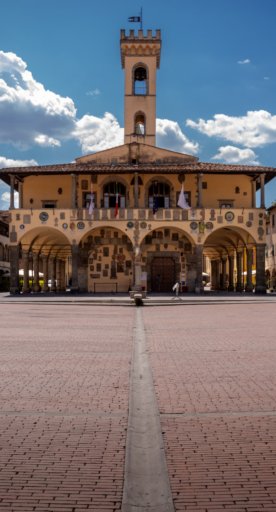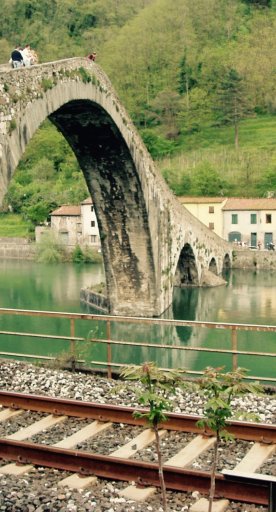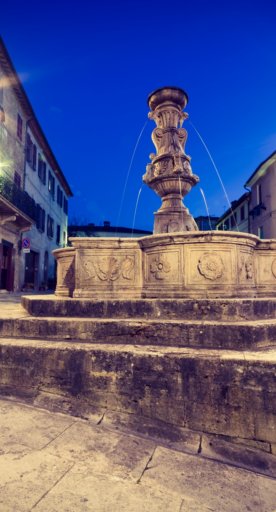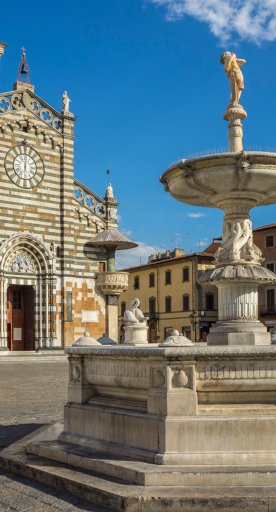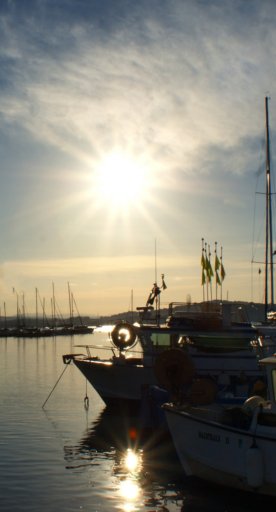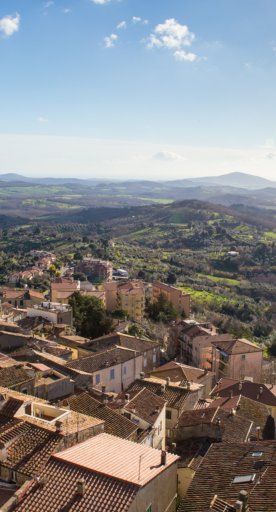A day trip to Barga
What to see in the heart of the Serchio Valley
Have you ever heard about Barga? If not, hop in your car and head over there now! This Tuscan hidden gem is a medieval town nestled in the heart of the Serchio Valley, the main town of the “Media Valle” (mid-valley) in the province of Lucca. Barga is located in the Tuscan-Apennine hills at 410 meters above sea level, dominated by the Pania della Croce, a mountain in the Apuan Alps. For its historical, artistic and touristic importance, Barga has received several awards, including "One of the Most Beautiful Villages in Italy," "Orange Flag Touring Club" and "Cittaslow," all leading standards in the tourism industry.
-
1.Main sights
-
2.Events
-
3.Curiosities
-
4.How to get there

Barga boasts many ancient traditions dating to the early-medieval Longobard era (6th-8th centuries), as also noted in the town's layout, which has remained virtually unchanged since then. Narrow streets interweave the irregular-shaped buildings in a web-like form. In the Middle Ages, Lucca and Pisa fought extensively over control of the flourishing town and its surrounding territory. Florentines also battled for the dominion of Barga, which later passed to the Duchy and Grand Duchy of Tuscany.
Main sights

- The castle: Barga's surviving castle has been beautifully restored. The structure is perched on a ridge 410 meters high and is protected by a city wall with three gates: Porta Reale, Porta Macchiaia and Porta di Borgo. In former eras it also functioned as a private residence.
- Duomo: Built between the 11th and 16th centuries, Barga’s cathedral is situated in piazza Ser Barghesano. Constructed using local limestone, as noted in parts of the façade, it's the main example of Romanesque architecture in the Serchio Valley. Inside the cathedral, you'll find a large wooden statue of St. Christopher, the town’s patron saint, and a 12th-century pulpit with four red marble columns.

- The conservatory of S. Elisabetta: This ancient monastery of the religious order of the “Clarisse” dates to the 15th century. In 1788, Pietro Leopoldo, Grand Duke of Tuscany, converted the building into a conservatory for educating young girls. The interior is worth a visit not only for its spacious cloister but also for the Della Robbia school altarpiece (in the nuns’ church) and a 15th-century cross.
- Arringo: The "Arringo" is the large lawn located between the main cathedral and the Praetorian Palace, the building where parliament would meet. On each side of the square you'll enjoy breathtaking views of Barga's magnificent surrounding landscape.
- Loggia del Podestà: This 14th-century civic building vaunts an audience hall and the old prisons. On the outer wall, check out old units of measurement still visible today. The area currently houses the town's civic museums.
- Church of San Francesco: This beautiful church was built between 1471 and 1490. The church features several glazed terracotta works and many pieces by Andrea della Robbia and his sons, not to mention a 15th-century cloister at the entrance.
- Teatro dei Differenti: Barga’s main theater is packed with tradition. The building was constructed in 1668 and operated until 1785, when the Duke deemed it too small. As a result, a new building was constructed on top of the old structure in the 1800s. Today it still sets the tone for Barga's world of theater.
Events

- Second-hand and antiques fair: Every second Sunday of the month, from 8am onwards, Barga's historic center is filled with over 60 stands of second-hand and antique objects.
- Barga Jazz Festival: Established in 1986, Barga Jazz Festival focuses on original scores and musical arrangements for jazz orchestras. You'll find this event mid-August. Check out the website for more information.
- Opera Barga Festival: Barga also hosts an annual international opera festival.
- Cena in Vignola: You'll also find a sagra in the vineyard below the city's cathedral.
- Sagra del pesce e patate: This "fish and chips festival" celebrates a curious and delightful Barga-Scottish connection.
Curiosities

- iBarga: This application for iPhone and iPad offers detailed information about historical buildings, monuments and works of art in town.
- The town of Barga won the title of “most Scottish town in Italy” for the large number of Scottish migrants that came here in the early 20th century.
- The Italian poet Giovanni Pascoli spent a long time in Castelvecchio Pascoli, a frazione (hamlet) of Barga. Once in town, you can visit the Pascoli House Museum and his grave in the adjoining chapel.
How to get there
Barga, located in the province of Lucca, is located 35 km north of the province's namesake. To get there by train, the closest train station is 5 km from town in Gallicano. You'll find trains from the majority of major towns in the provinces of Lucca and Pisa; from other Tuscan towns, you'll probably have to change two or more trains to reach Barga. To reach town by bus, you'll find a direct service operated by Lazzi Company, which takes you from Pisa Centrale to Lucca (piazza Verdi) and then directly to Barga (the stop, Fosso, is just outside the medieval gates). The easiest way to reach Barga is by car, but keep in mind that you can't drive into town and will have to park outside the main gates. The best way to visit Barga's center is on foot.














